Corral And Sea At Santa Ana 3/26/2010 ( Comic Version )
Did you know? - Surf and turf or Surf 'n' Turf is a main course particularly common in British/Irish pubs and North American steakhouses which combines steak and seafood, typically lobster, Dublin Bay prawn, or shrimp, which may be grilled or breaded and fried.
The term originated along the Atlantic coast of North America. Its earliest known use is in 1966 newspaper article in Miami. Jane and Michael Stern claim that it was served under this name in the SkyCity restaurant (in Seattle's Space Needle) at the 1962 World's Fair. In the Sterns' Encyclopedia of Bad Taste, Surf 'n' Turf epitomizes culinary kitsch: "the point...is to maximize hedonistic extravagance" by ordering the two most expensive things on the menu; that is, the menu is guided not by aesthetic concerns, but for the sake of vulgar display.
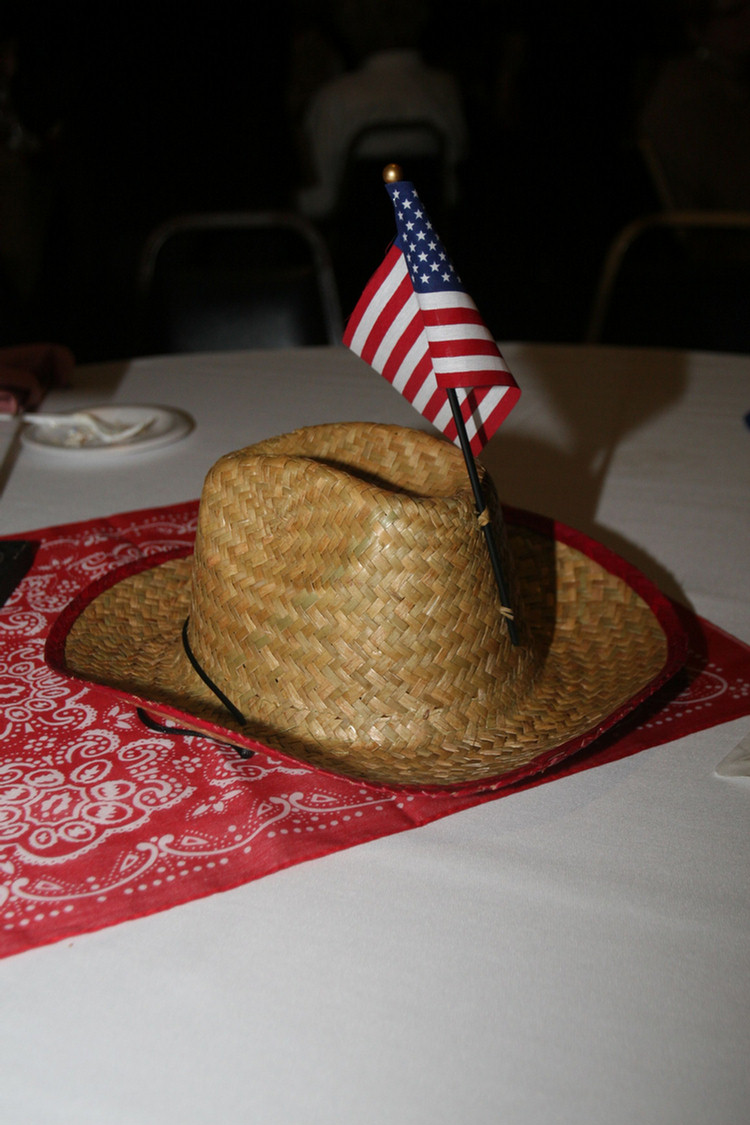
GOD BLESS AMERICA
We Saw Smoke Two Blocks Away!
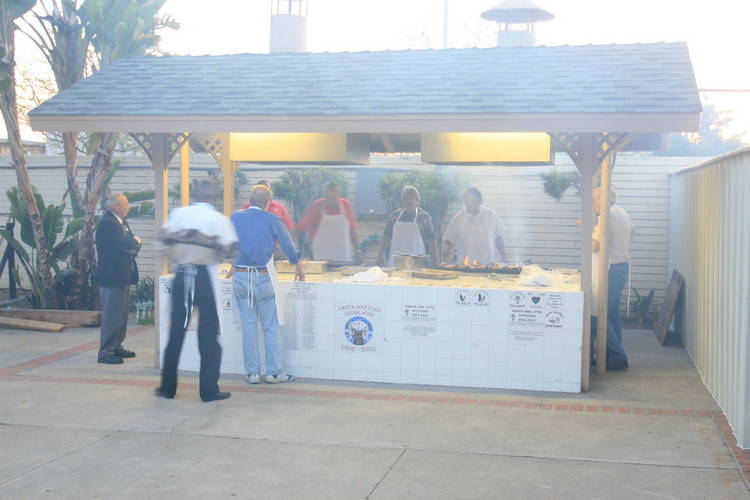
It smelled sooooo good!
Did you know? - Barbecue or barbeque (common spelling variant) (with abbreviations BBQ, Bar-B-Q and Bar-B-Que; diminutive form of barbie, used chiefly in Australia and New Zealand; and called Braai in South Africa) is a method and apparatus for cooking meat, with the heat and hot smoke of a fire, smoking wood, or hot coals of charcoal, cooking gas, or even electricity; and may include application of a marinade, spice rub, or basting sauce to the meat or vegetables. The term as a noun can refer to the meat, the cooking apparatus itself, or to a party that includes such food. The term as an adjective can refer to foods cooked by this method. The term is also used as a verb for the act of cooking food in this manner. Barbecue is usually cooked in an outdoor environment heated by the smoke of wood or charcoal.
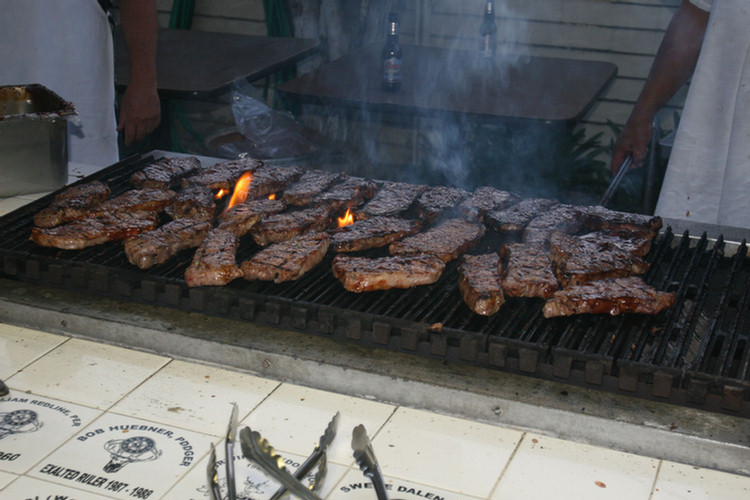
They cooked over 300 steaks this evening!
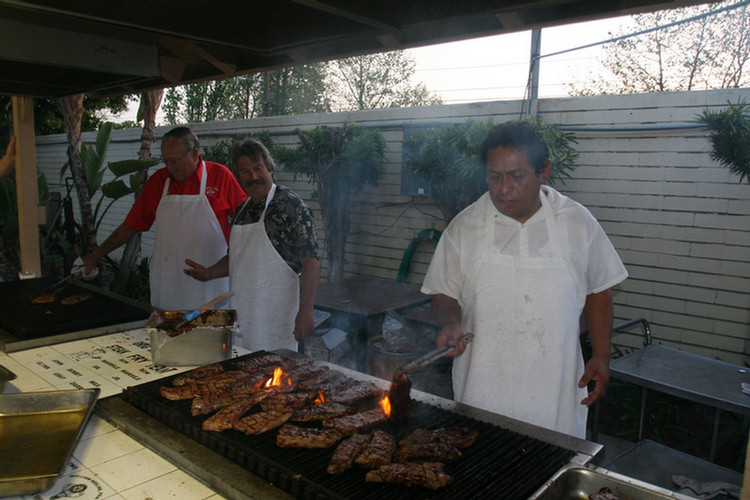
Did you know? - The origins of both the activity of barbecue cooking and the word itself are somewhat obscure. Most etymologists believe that barbecue derives ultimately from the word barabicu found in the language of both the Timucua of Florida and the Taíno people of the Caribbean. The word translates as "sacred fire pit."
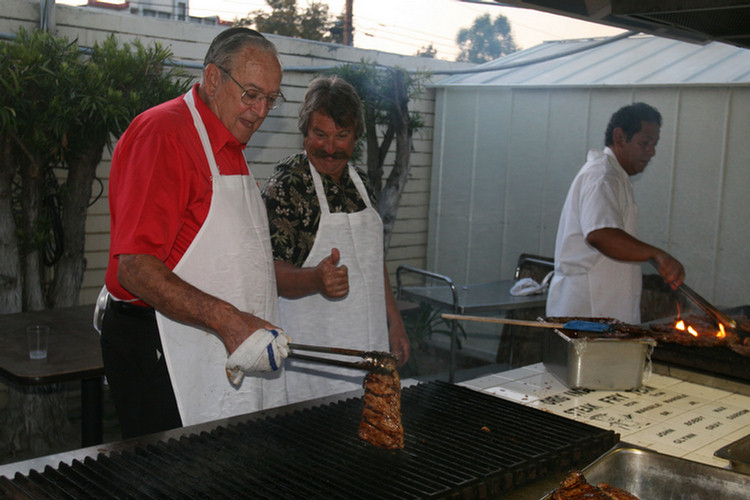
The sacred fire pit
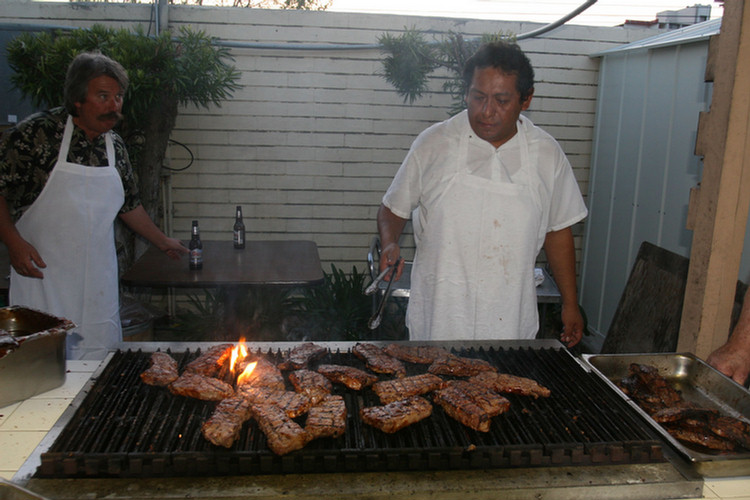
Oh oh... Throw some whiskey on the fire to put it out!
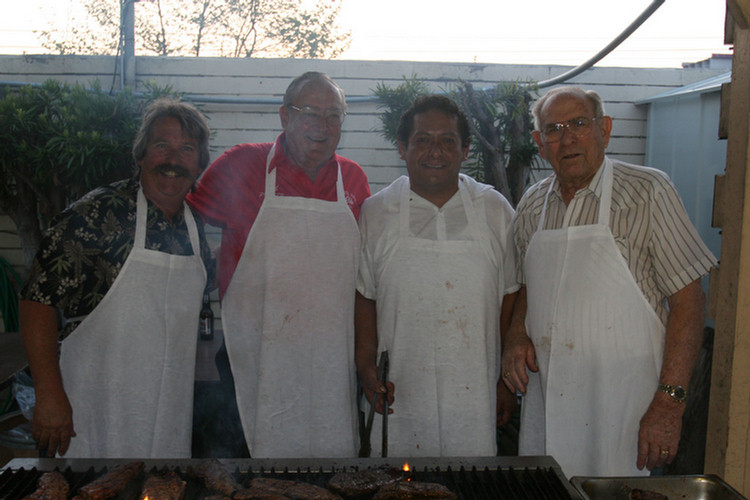
We all thank you for a job ..... he he he.... Well Done!
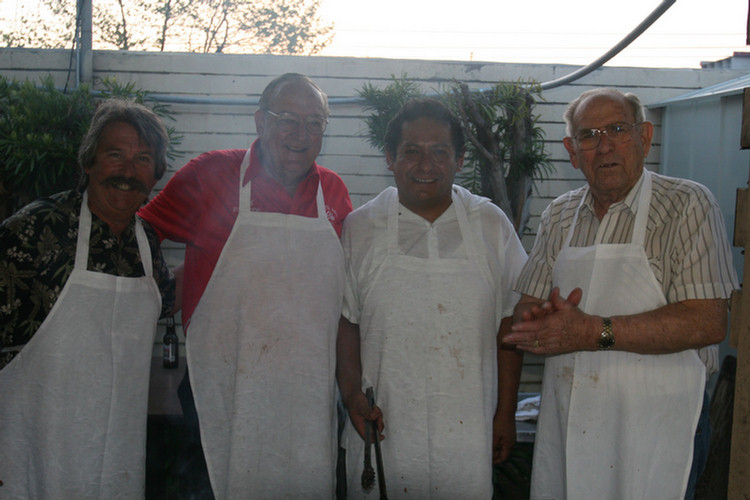
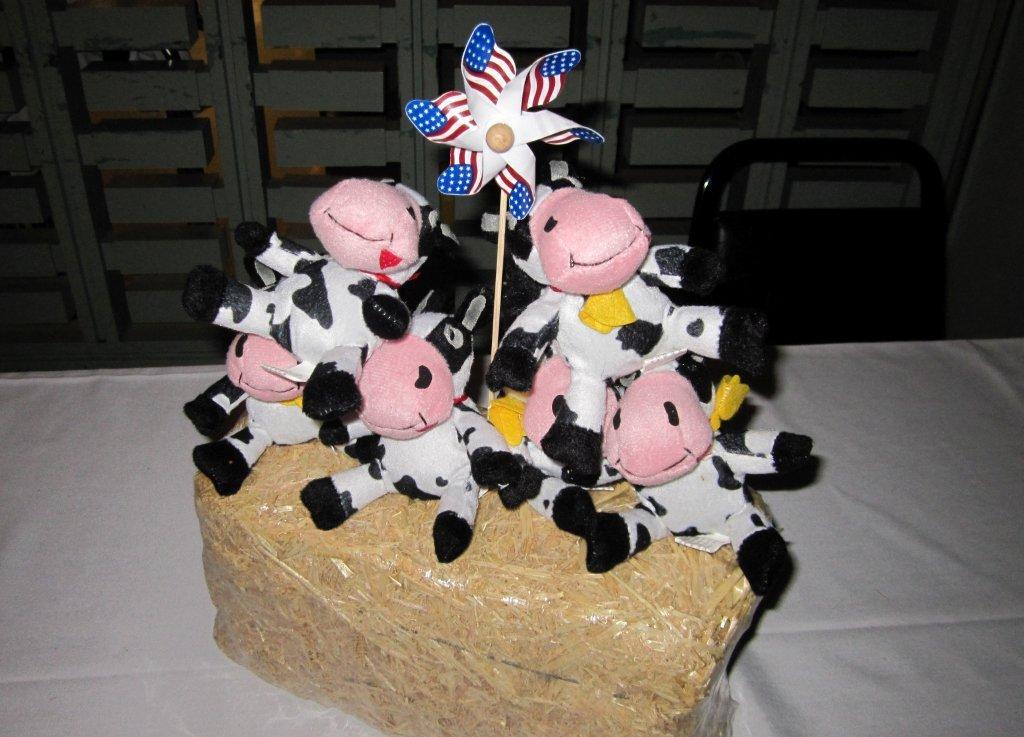
Wonder why they are smiling?
Meanwhile The Party Gets Going Inside!

Vance and Gladys devoured their meal
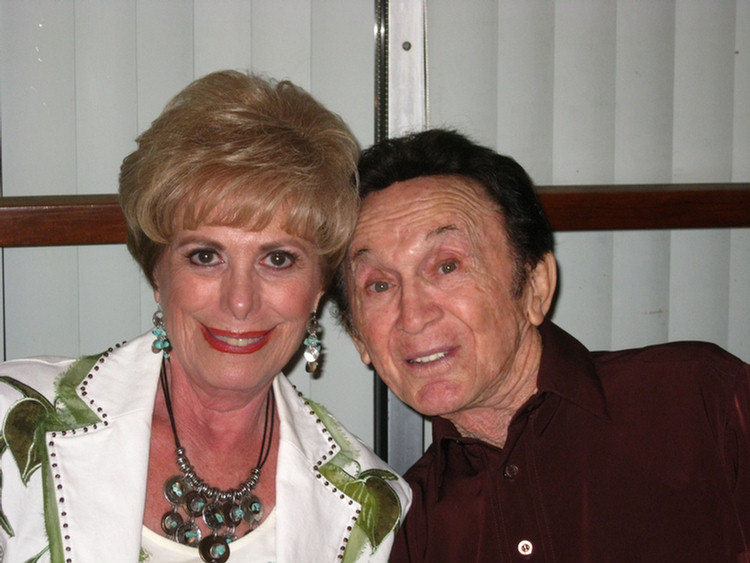
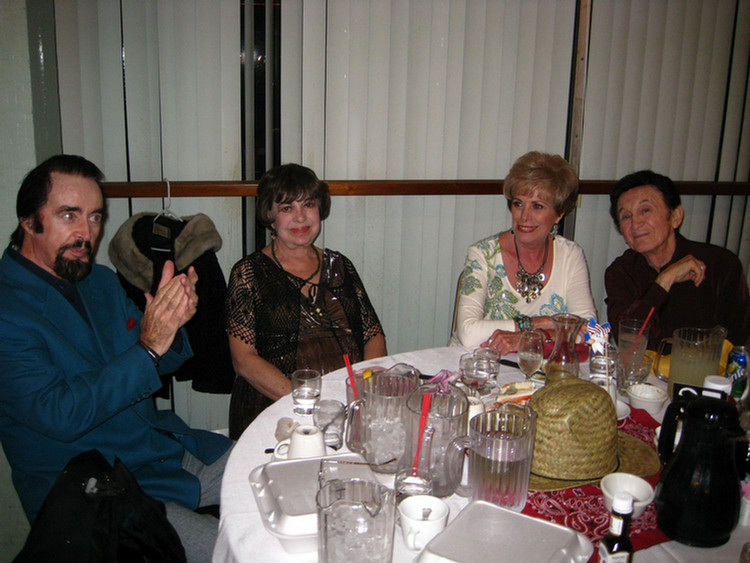
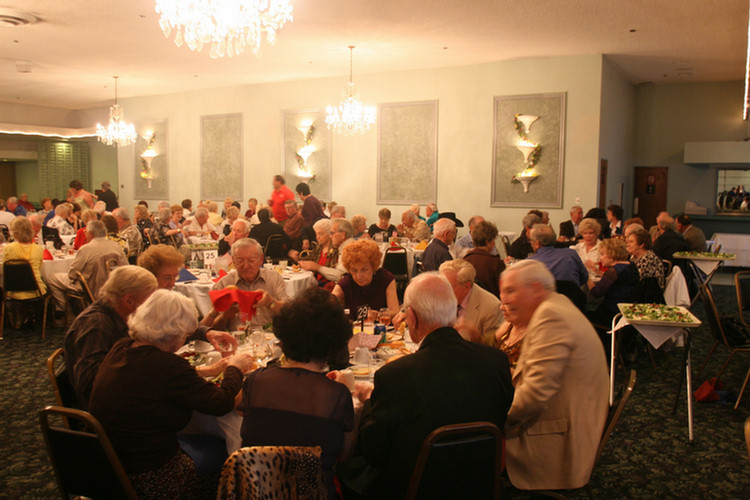
The room was full... Close to 340 this evening!
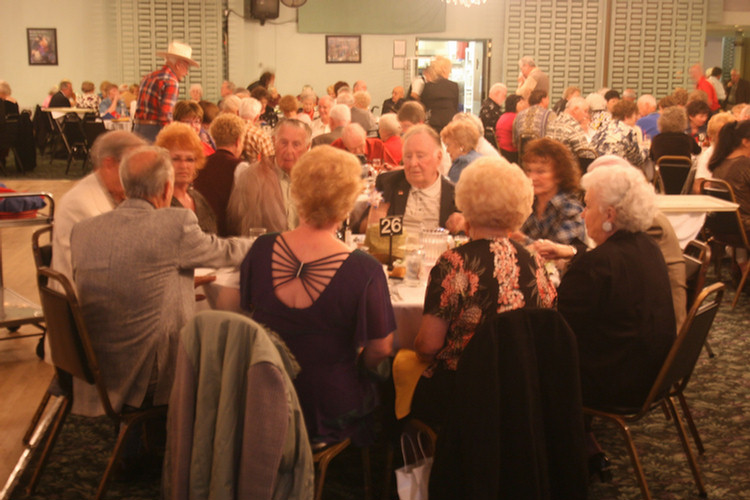
Rub-a-dub-dub... Here comes the grub!
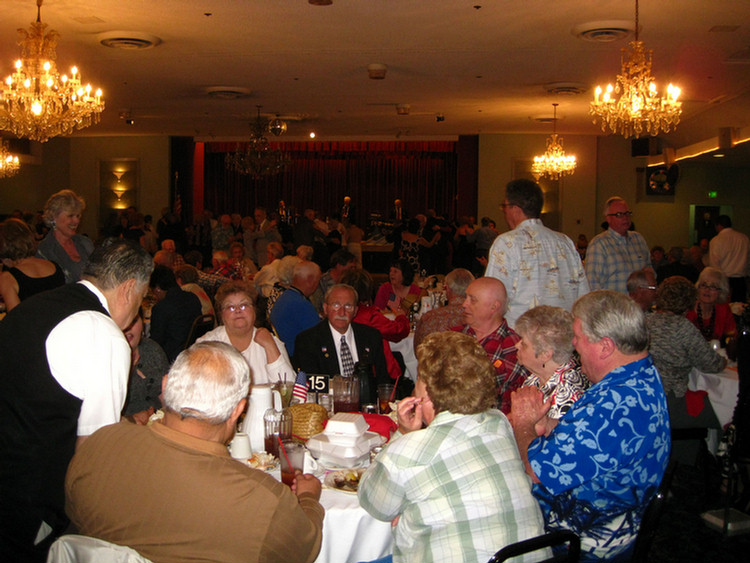
The sounds of people having a great time.... Slurp, chomp, giggle.....
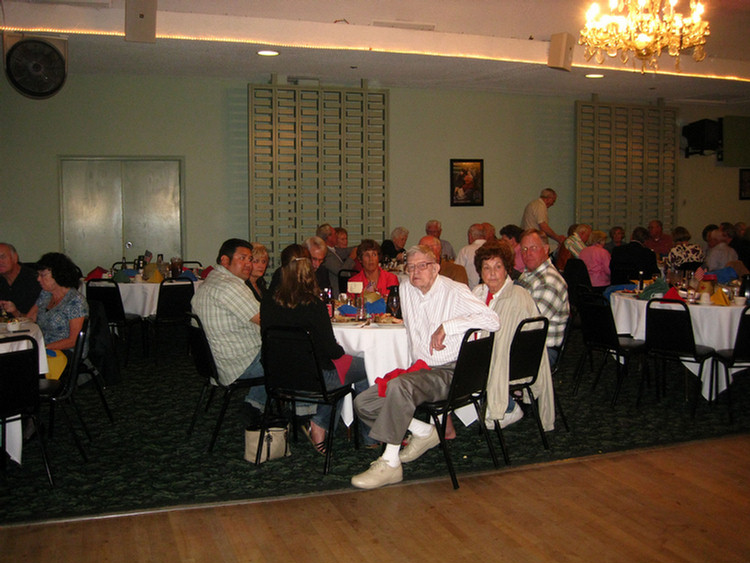
Someone is ready to dance

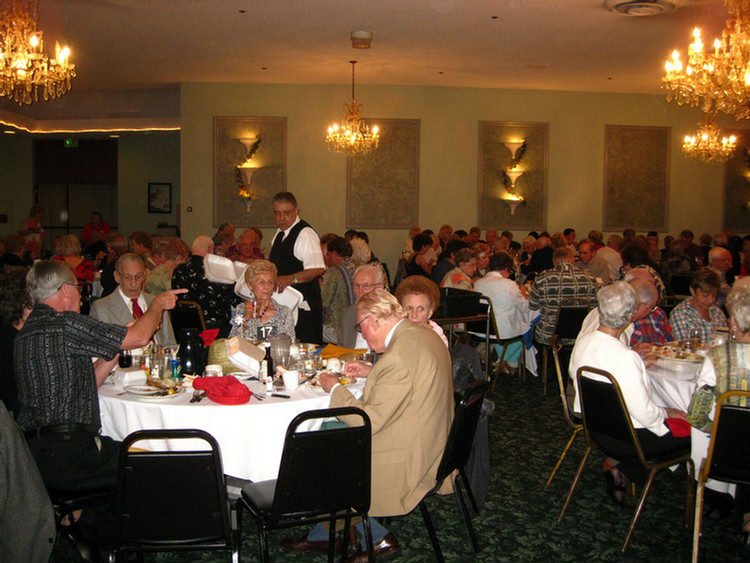
All of this and dessert too???
Did you know? - Dessert is a course that typically comes at the end of a meal, usually consisting of sweet food but sometimes of a strongly-flavored one, such as some cheeses. The word comes from the French language as dessert and this from Old French desservir, "to clear the table" and "to serve." Common desserts include cakes, cookies, fruits, pastries, ice cream, and candies.

M-m-m-m-m-m-m good!
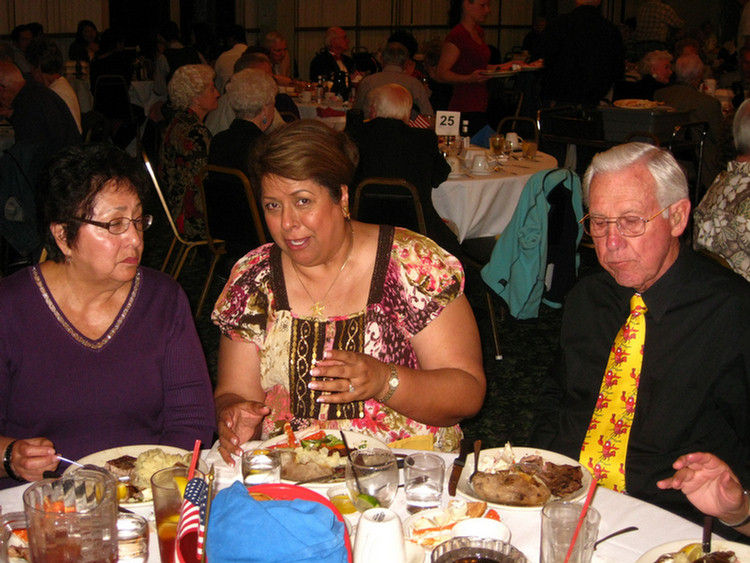
Vicky meets new folks... See Del's new tie!
Raeann Is With The Sherriff Tonight
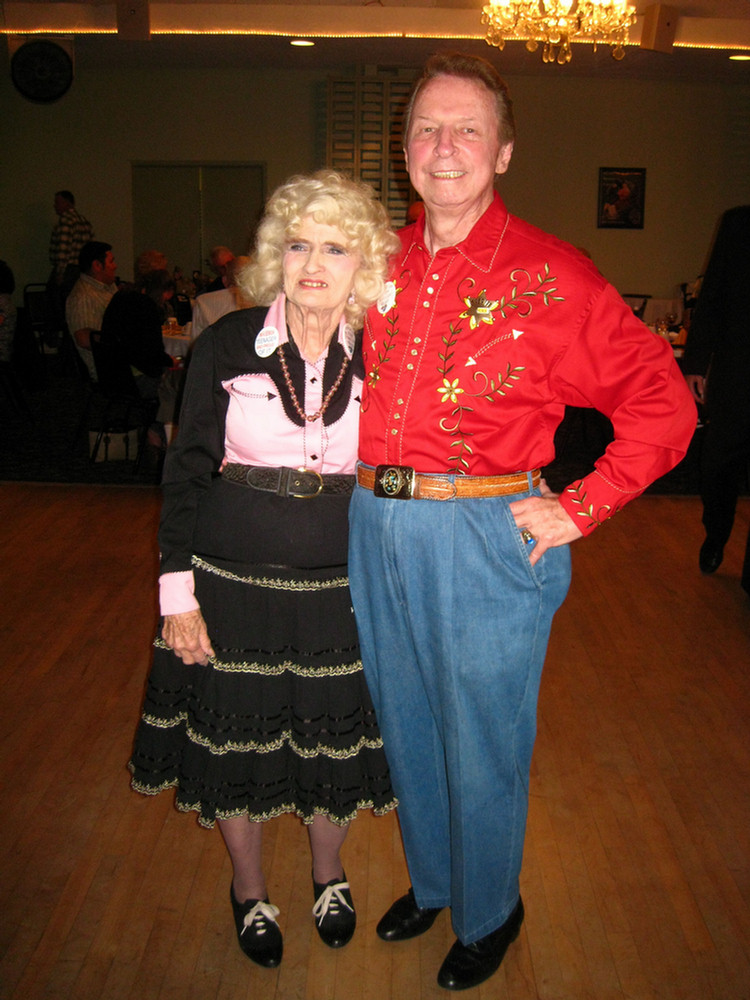
"Howdy partner!!"
Did you know? - A sheriff is in principle a legal official with responsibility for a county. In practice, the specific combination of legal, political, and ceremonial duties of a sheriff varies greatly from country to country.
The word "sheriff" is a contraction of the term "shire reeve". The term, from the Old English scīrgerefa, designated a royal official responsible for keeping the peace (a "reeve") throughout a shire or county on behalf of the king. The term was preserved in England notwithstanding the Norman Conquest. From the Anglo-Saxon kingdoms the term spread to several other countries, at an early point to Scotland, latterly to Ireland and the United States.
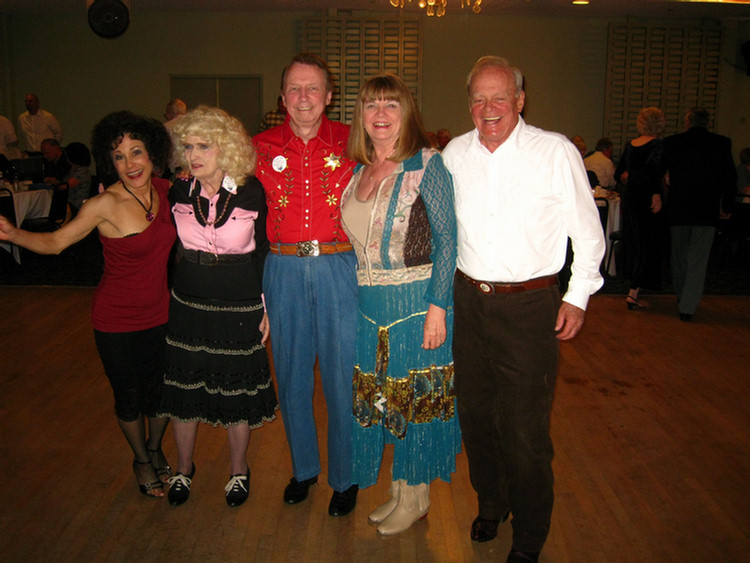
Happy Birthday; 98 Years Young Today!

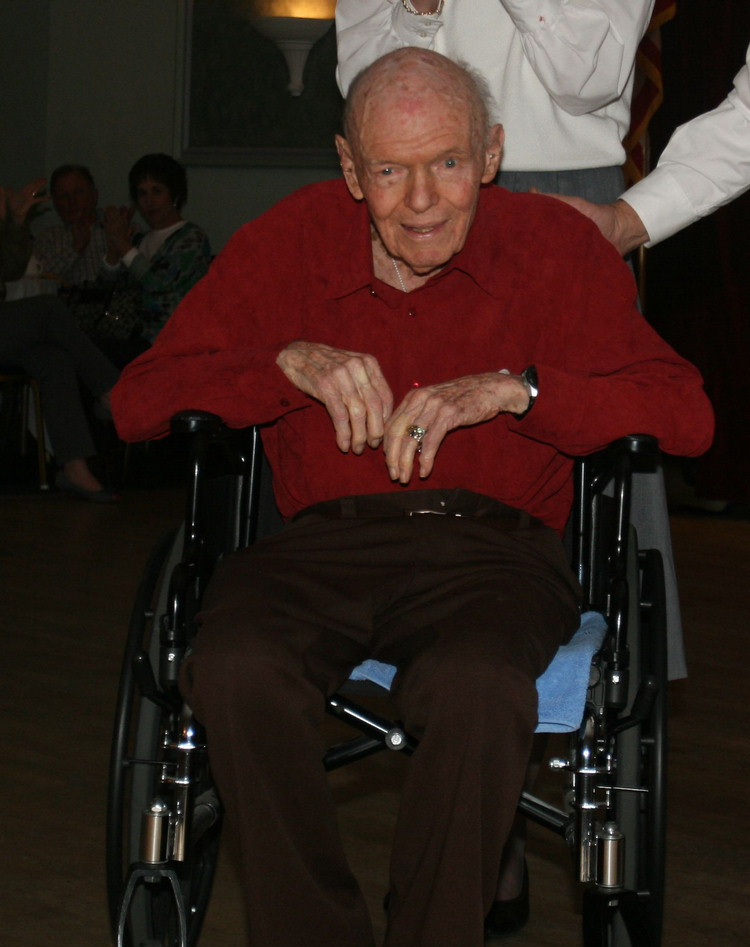
It Must Be Funny Hat Time; Bob Has The Camera
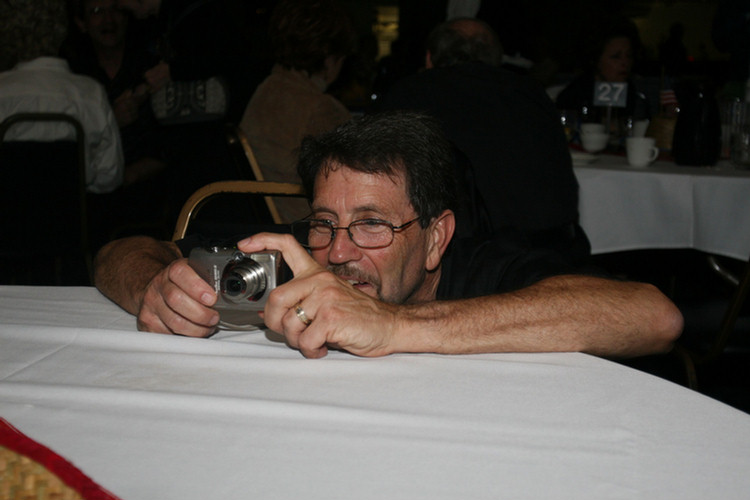
I didn't realize that Bob was so short!
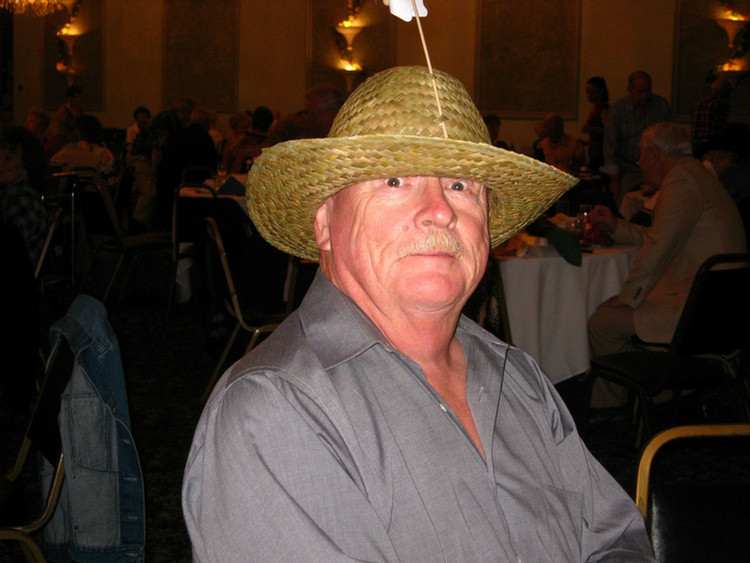
Paul... You are wearing the centerpiece!
Did you know? - There are several styles of straw hats, but all of them are made of woven straw. Many of these hats are formed in a similar way to felt hats; they are softened by steam or by submersion in hot water, and then formed by hand or over a block. Finer and more expensive straw hats have a tighter and more consistent weave. Since it takes much more time to weave a larger hat than a smaller one, larger hats are more expensive.
Straw hats have been worn consistently in Europe and Asia in the Summer since antiquity, and arguably are the least-changed form of headgear, since many medieval examples would draw no special attention if worn today.
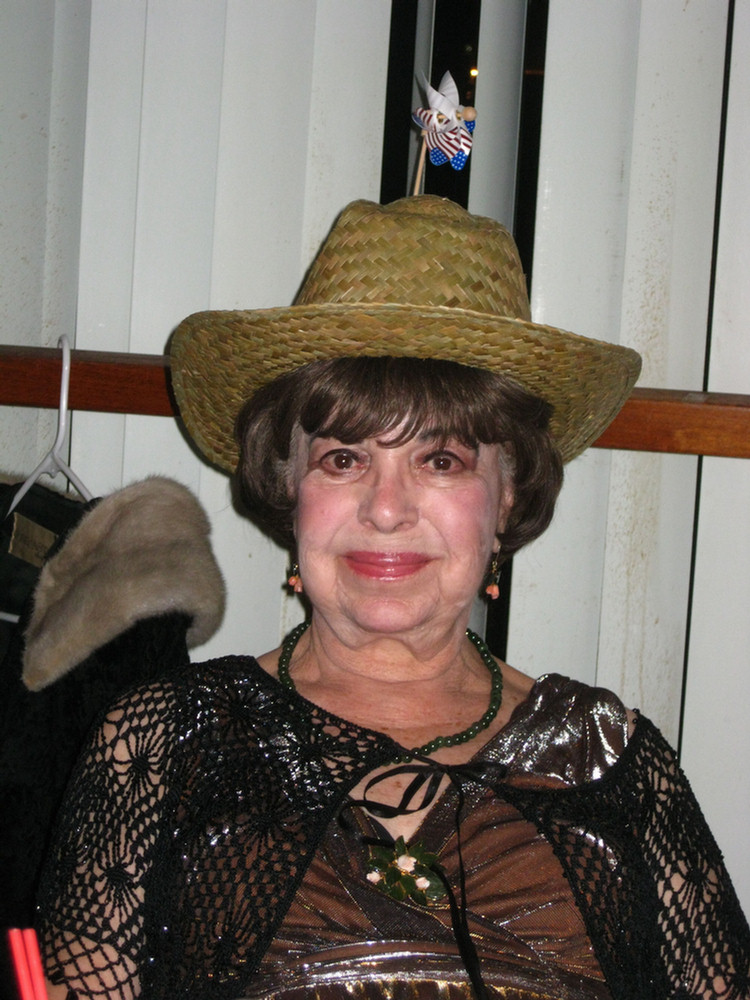
It looks much better on Gladys
The Centerpieces Also Had a Banana! (OK, Bandana)
Did you know? - A kerchief (from the French couvre-chef, "cover the head") is a triangular or square piece of cloth tied around the head or around the neck for protective or decorative purposes. The popularity of head kerchiefs may vary by culture or religion, as among Amish women, Orthodox Jewish women, Muslim women, and older Orthodox Christian women.
A "handkerchief" or "hanky" primarily refers to a napkin made of cloth, used to dab away perspiration, clear the nostrils, or, in Victorian times, as a means of flirtation. A woman could intentionally drop a dainty square of lacy or embroidered fabric to give a favored man a chance to pick it up as an excuse to speak to her while returning it. Handkerchiefs were sometimes scented to be used like a nosegay or tussy-mussy, a way of protecting those who could afford them from the obnoxious scents in the street.

M-m-m-m-m I think his head is too big!

Donna ad
Bob try new uses for the bandana
Did you know? - A bandanna or bandana (from the Hindi: बन्धन bandhana, "to tie") is a type of large, usually colorful, kerchief, usually worn on the head. Bandannas are frequently printed in a paisley pattern. Bandanas are most often used to hold hair back, either as a fashionable head accessory, or for practical purposes:
- Outdoor workers, such as farmers and cowboys, wear them around the neck to wipe the sweat off their faces and keep dust out of their collars.
- Wildland firefighters wear them over the mouth and nose to lessen inhalation of dust and fumes.
- Dancers and other athletes wear them during practice as a simple way of keeping hair and sweat out of their faces, or as part of their costume/uniform.
- Soldiers wear them to keep their own sweat and blood out of their eyes.
- Kitchen staff may wear them to keep hair from falling into the food that they prepare.
Donna Found The Surf.... Looks Like Nemo In Blue
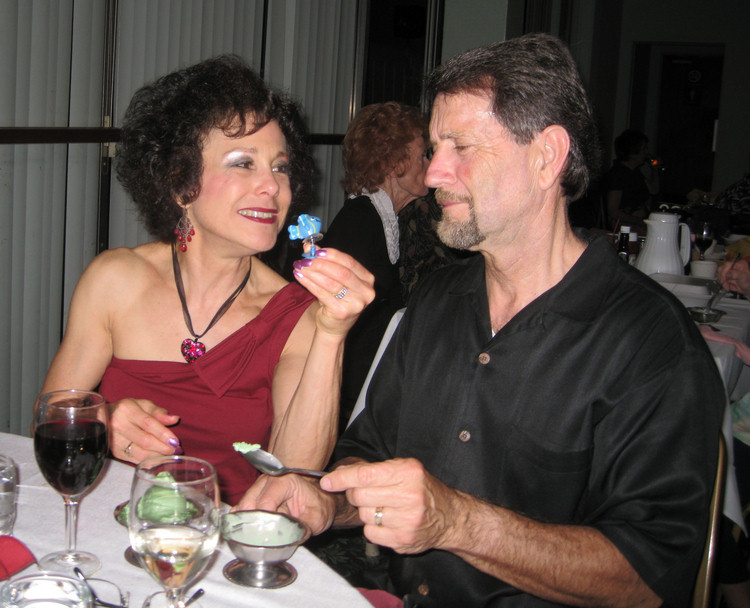
Bob is looking apprehensive
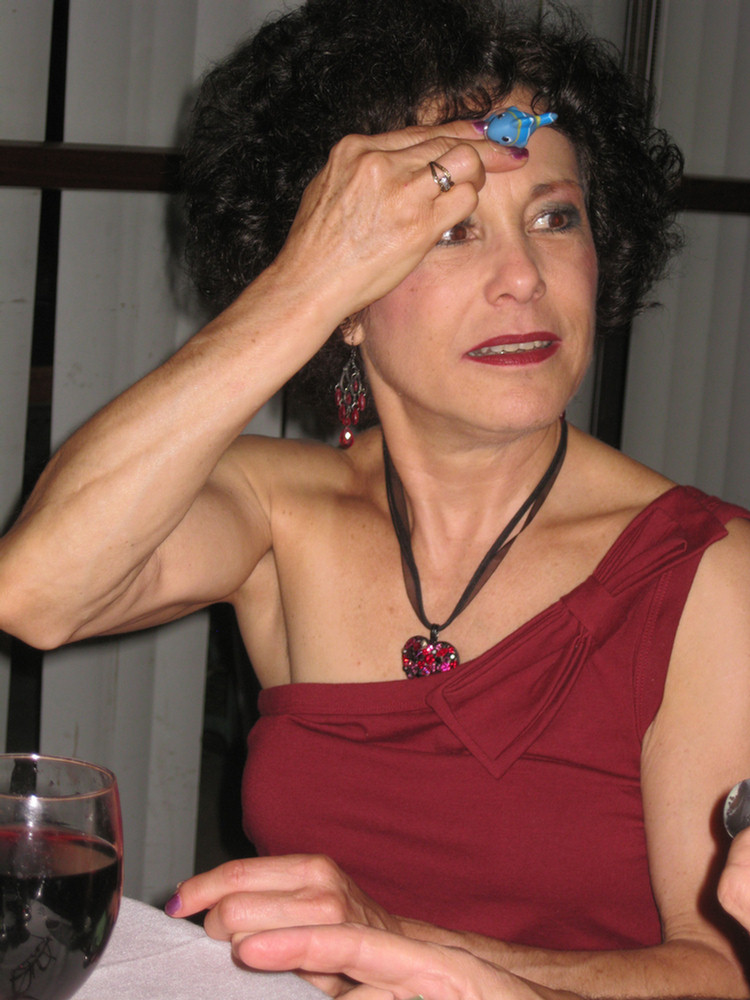
Unicorn???
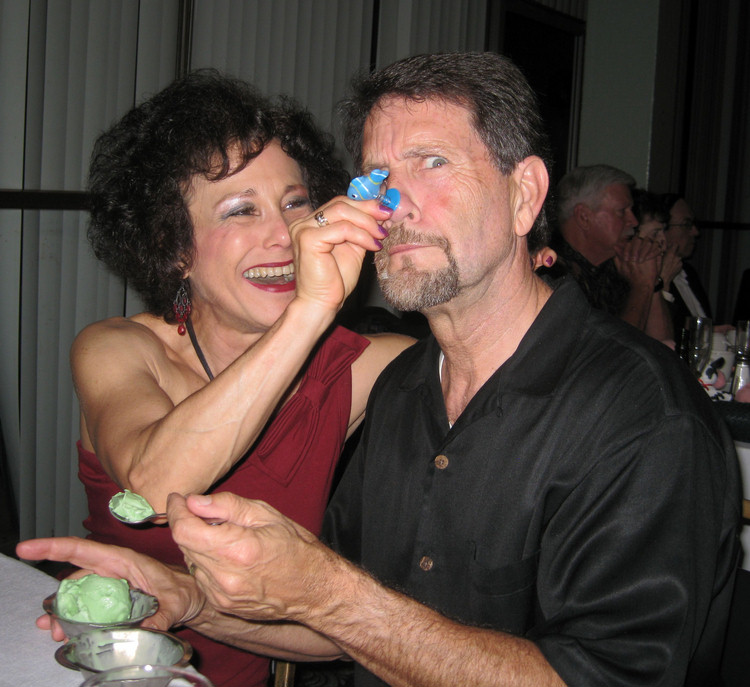
"I'm glad she does not carry super-glue with her!!"
Did you know? - Cyanoacrylate is the generic name for cyanoacrylate based fast-acting adhesives such as methyl 2-cyanoacrylate, ethyl-2-cyanoacrylate (commonly sold under trade names like SuperGlue and Krazy Glue), n-butyl cyanoacrylate (used in the veterinary glues Vetbond and LiquiVet and skin glues like Indermil and Histoacryl). 2-octyl cyanoacrylate is a medical grade glue encountered under various trade names; e.g., LiquiBand, SurgiSeal, FloraSeal, Dermabond, and Nexaband. Cyanoacrylate adhesives are sometimes known as "instant glues". The abbreviation "CA" is commonly used for industrial grades.
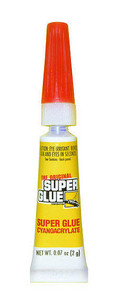
Cyanoacrylate is a tenacious adhesive, particularly when used to bond non-porous materials or those that contain minute traces of water. It is also very good at bonding body tissue, and while this can be a bothersome (or even dangerous) side effect during everyday use, it has been exploited for the benefit of suture-less surgery.
Brain Freeze Coming!!

This gives a new meaning to the term "Ice Cream Headache"
Did you know? - An ice-cream headache, also known as brain freeze, cold-stimulus headache, or its given scientific name sphenopalatine ganglioneuralgia (meaning "nerve pain of the sphenopalatine ganglion"), is a form of brief cranial pain or headache commonly associated with consumption (particularly quick consumption) of cold beverages or foods such as ice cream and popsicles. It is caused by having something cold touch the roof of the mouth (palate), and is believed to result from a nerve response causing rapid dilation and swelling of blood vessels or a "referring" of pain from the roof of the mouth to the head.
Ice cream headache is the direct result of the rapid cooling and rewarming of the capillaries in the sinuses. A similar but painless blood vessel response causes the face to appear "flushed" after being outside on a cold day. In both instances, the cold temperature causes the capillaries in the sinuses to constrict and then experience extreme rebound dilation as they warm up again.
In the palate, this dilation is sensed by nearby pain receptors, which then send signals back to the brain via the trigeminal nerve, one of the major nerves of the facial area. This nerve also senses facial pain, so as the nerval signals are conducted the brain interprets the pain as coming from the forehead—the same "referred pain" phenomenon seen in heart attacks. Brain-freeze pain may last from a few seconds to a few minutes. Research suggests that the same vascular mechanism and nerve implicated in "brain freeze" cause the aura (sensory disturbance) and pulsatile (throbbing pain) phases of migraines.
Special Thanks To The Chefs
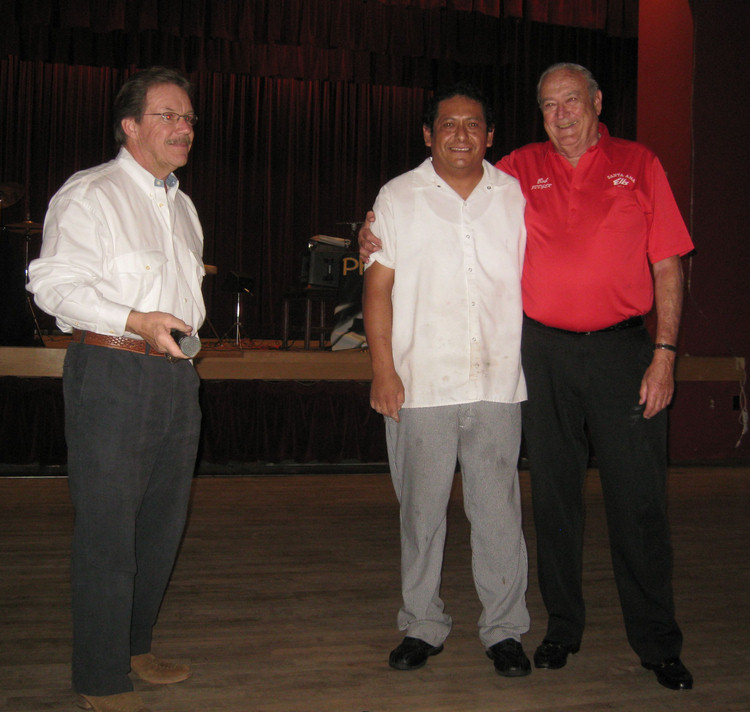
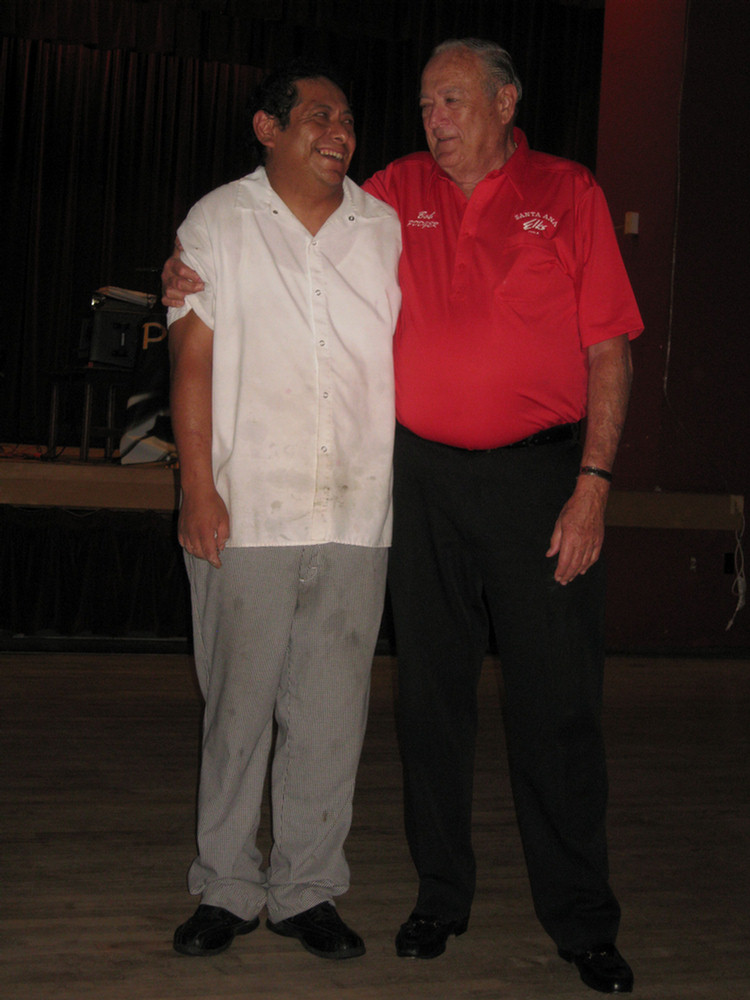
Look pretty good for just completing 300+ steaks

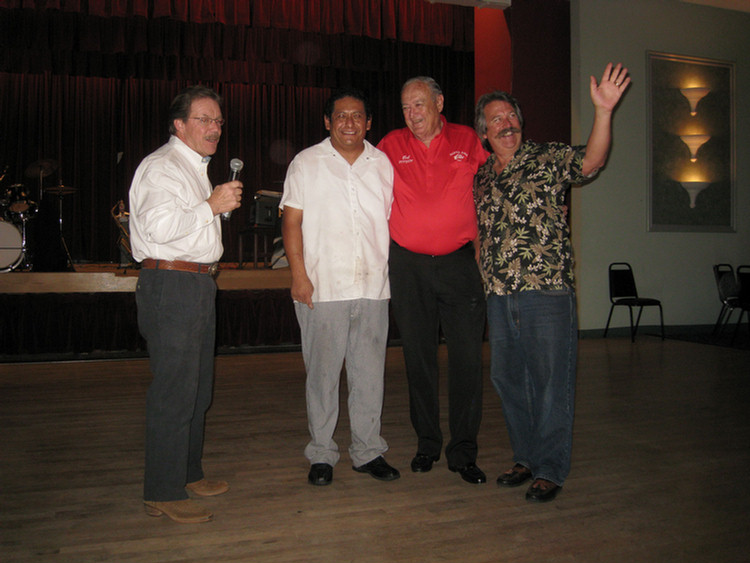
These folks worked hard to bring us a great meal!
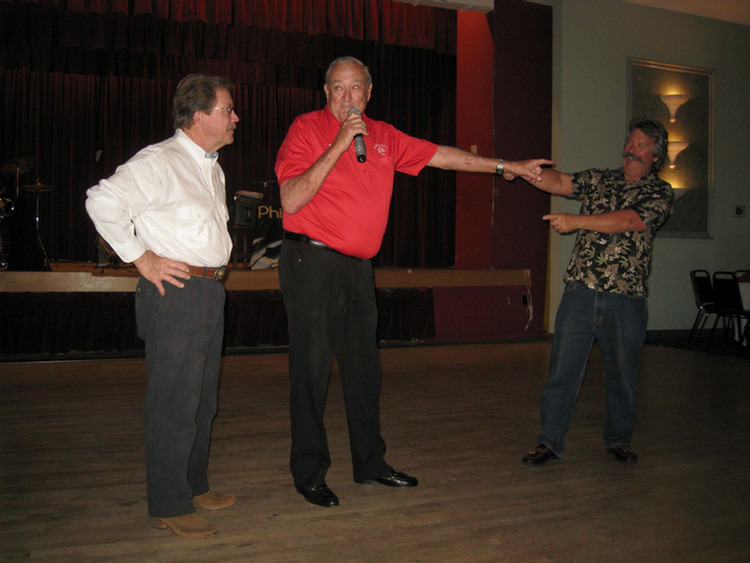
Jan And Jim Have Their Own Special Dance Floor
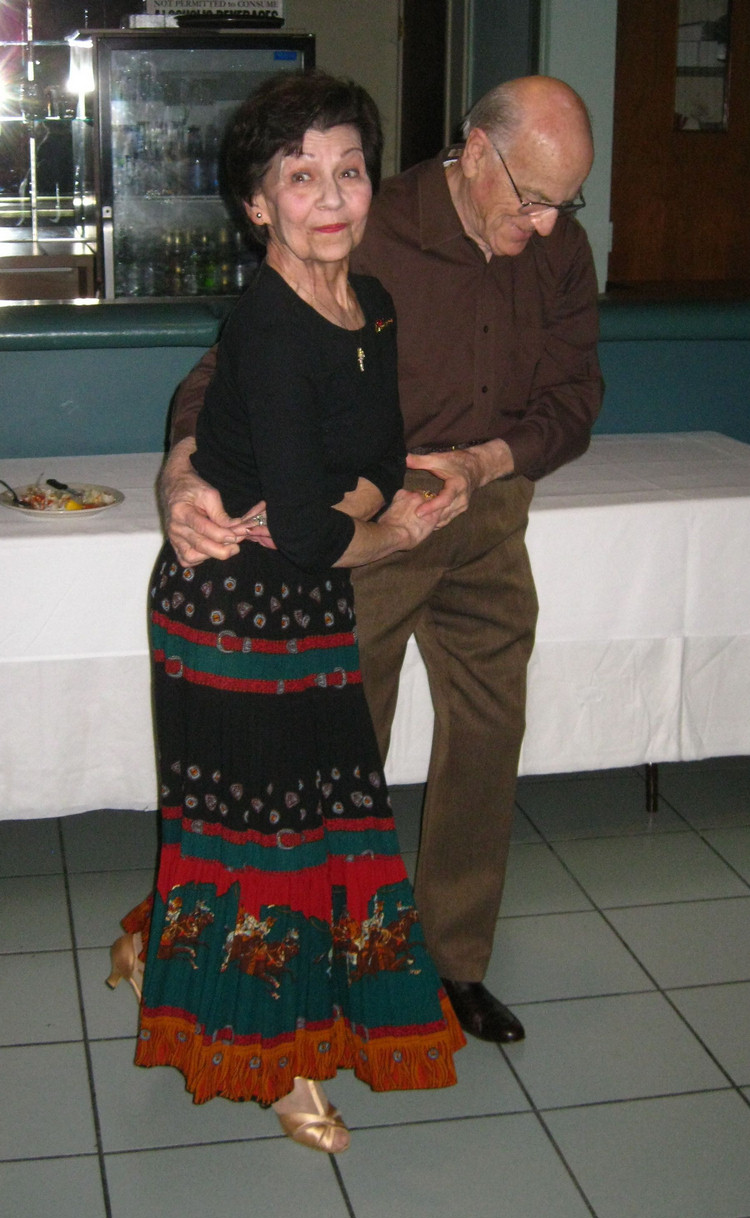
"Jim! Quit looking at your feet!"
Three Couples Had Anniversaries (Not Including Us); One Had A Birthday
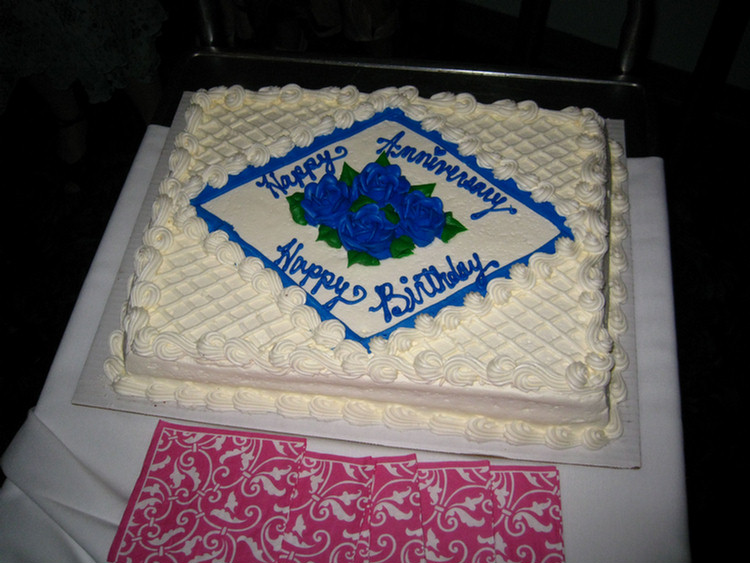
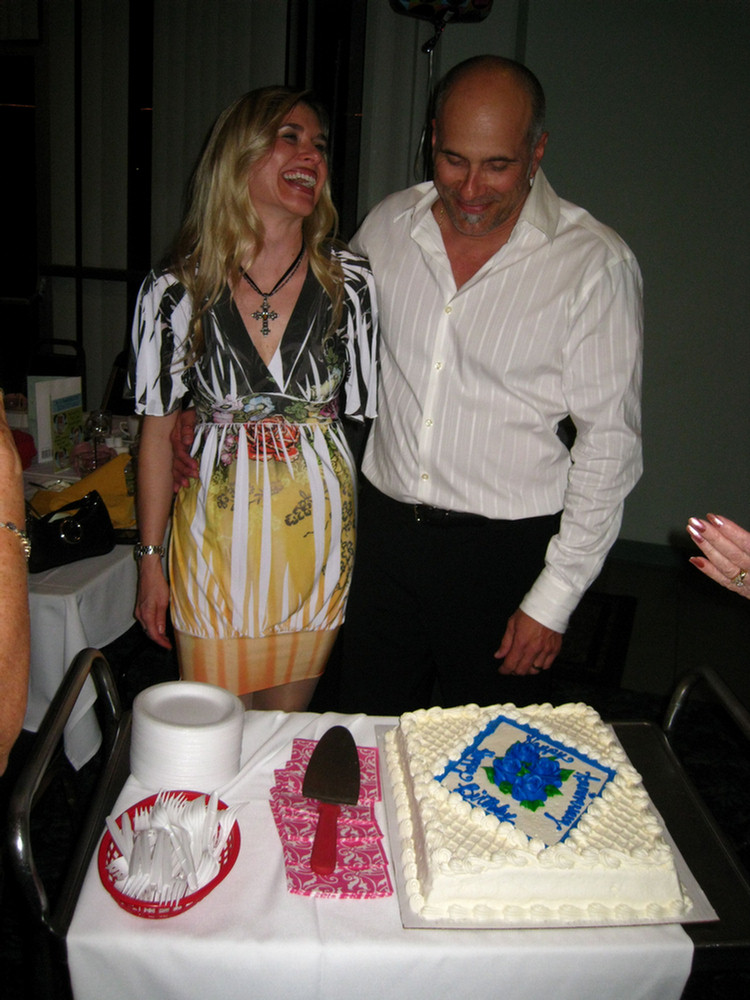
Happy Birthday
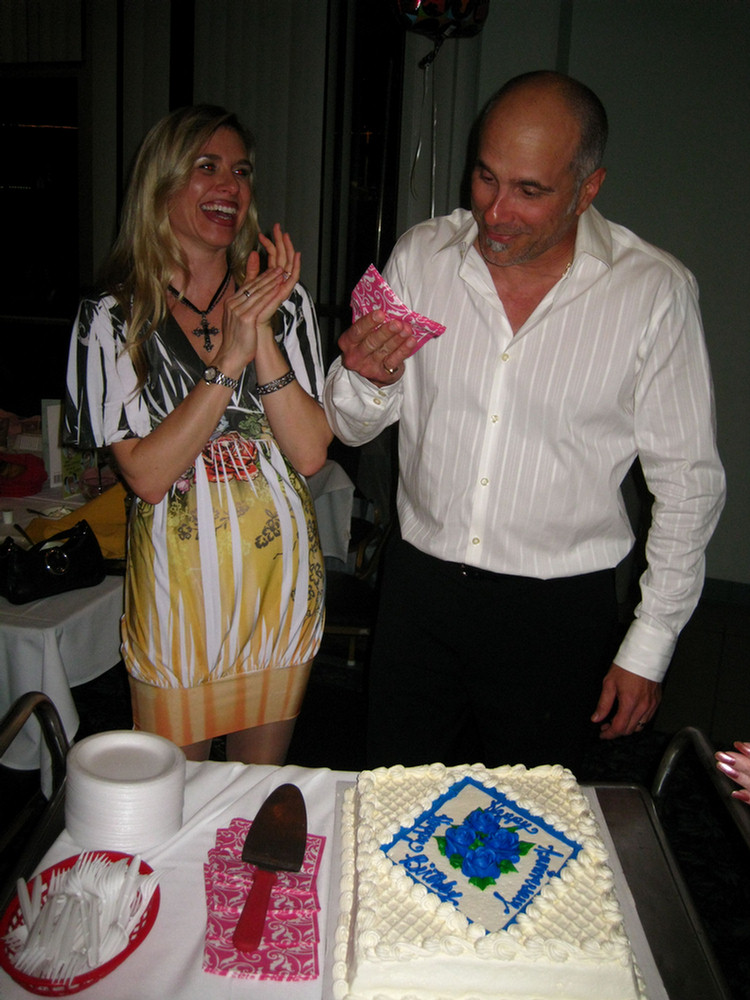
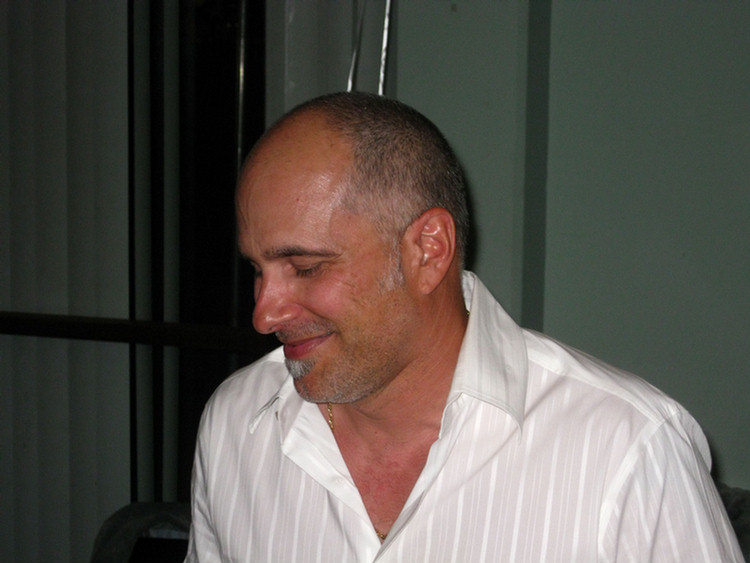
Did you know? - Sheriff John was a long-running children's television character who appeared on KTTV in Los Angeles from 1952 to 1970 on two separate series, Sheriff John's Lunch Brigade and Sheriff John's Cartoon Time.

He was played by John Rovick (born Oct. 2, 1919). Sheriff John started each program entering his office, singing "Laugh and be happy, and the world will laugh with you." He then said the Pledge of Allegiance and read a safety bulletin.
Rovick showed cartoons, including Crusader Rabbit and Porky Pig, and was visited by farm animals. An artist, "Sketchbook Suzie", would draw pictures requested by viewers. Sheriff John would give lessons about safety and good health habits. The highlight of the show was the birthday celebration.
Sheriff John would read as many as a hundred names, and then bring out a cake and sing the Birthday Party Polka. John Rovick retired from KTTV in 1981. He waS in his 90s WHEN HE PASSED AWAY in Boise, Idaho.
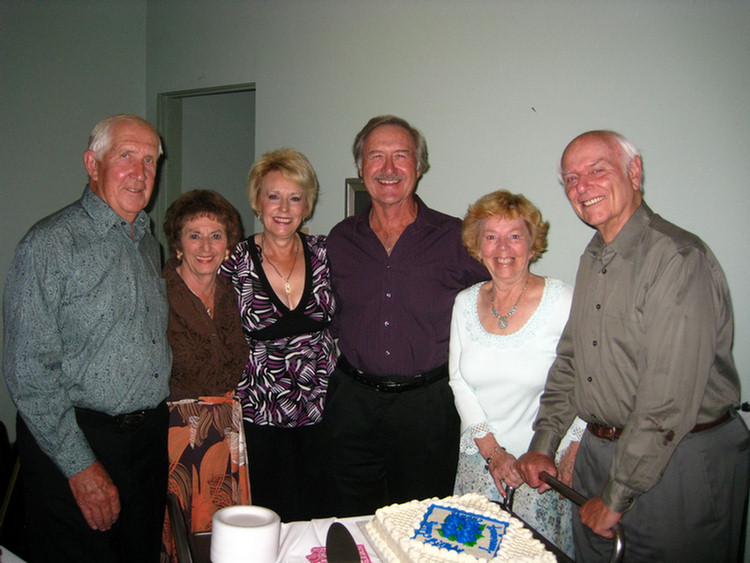
Triple Anniversary
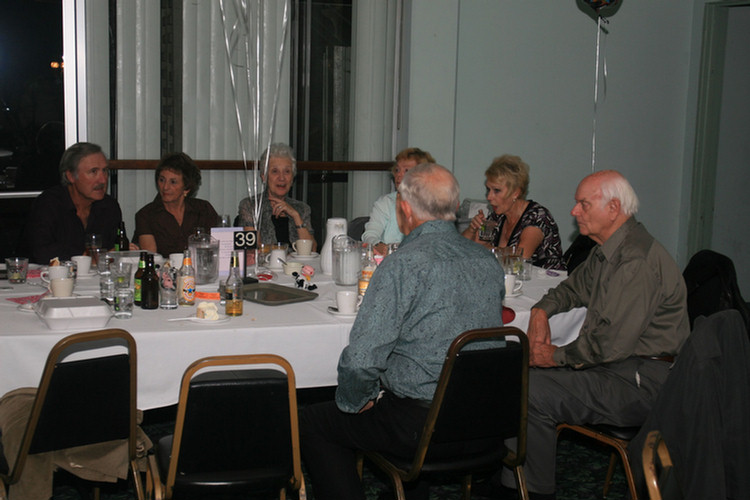
The Photographer Really Exists!
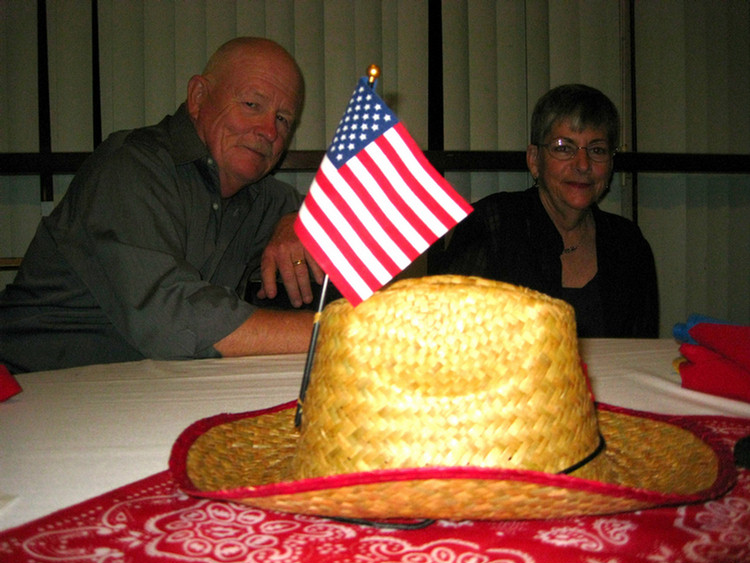
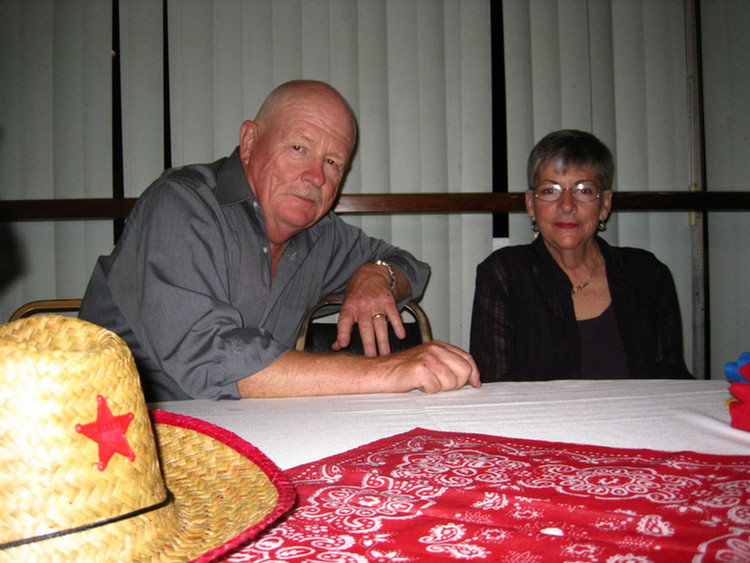
"I wonder how long it will be until the hat is on his head??"

I'd say about six seconds
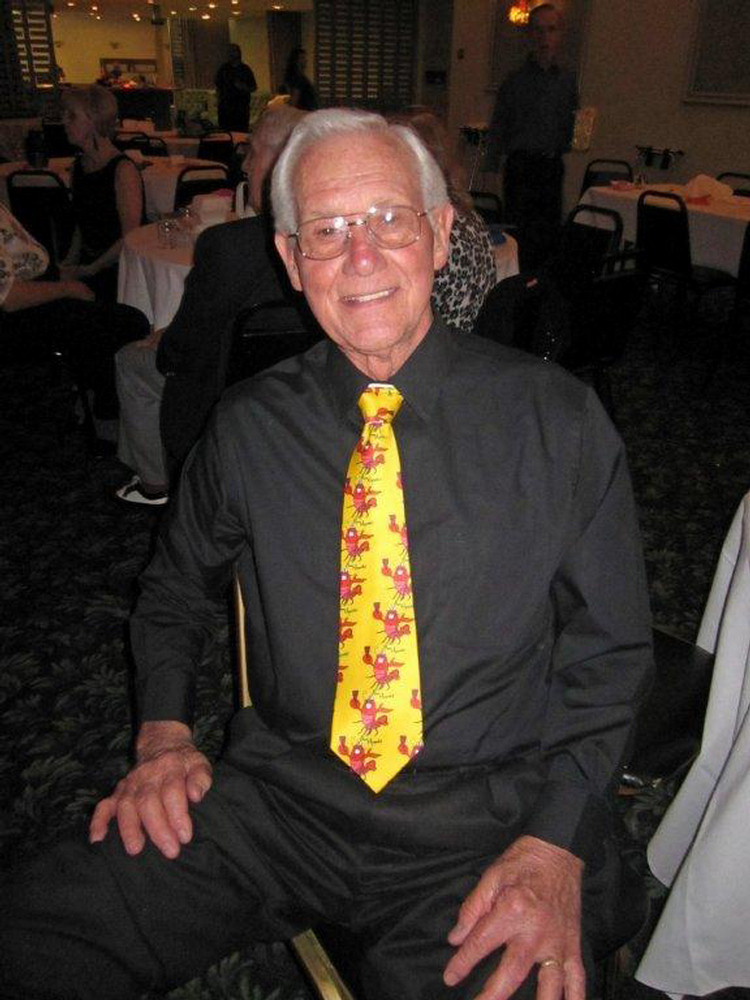
A tie for every occasion!
Time For A Line Dance
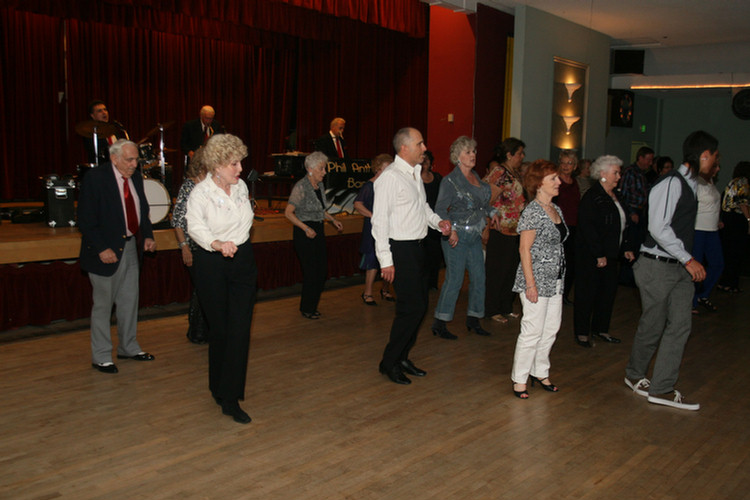

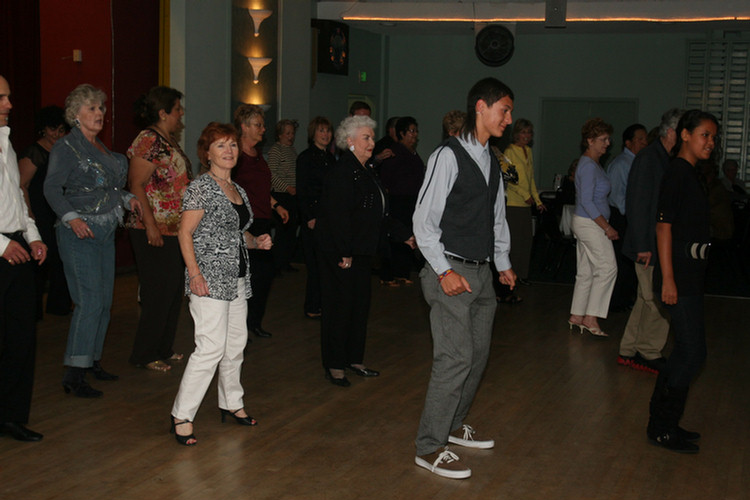
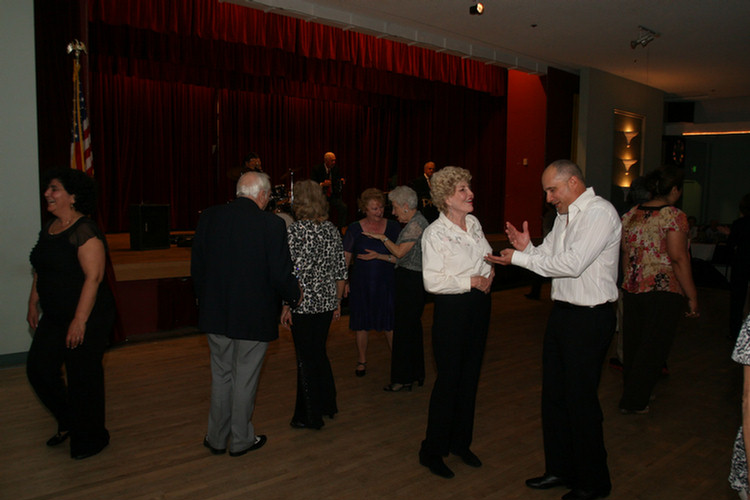
"Dang... I forget where I put my hoss!"
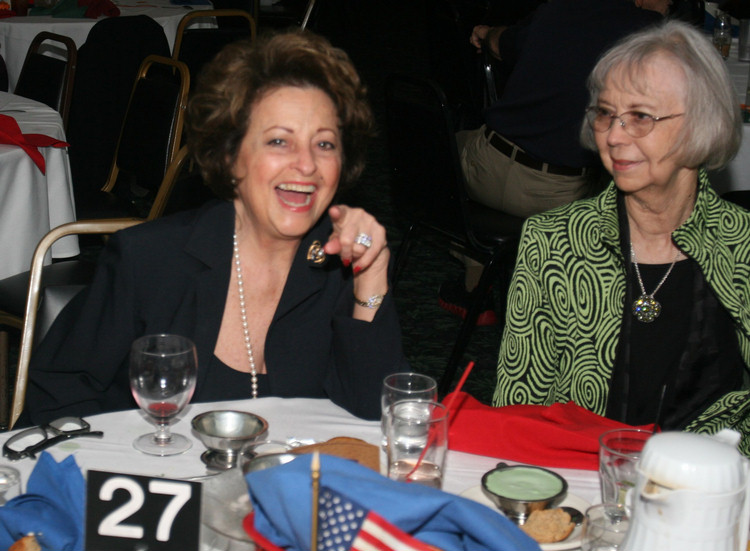
We are watching you!
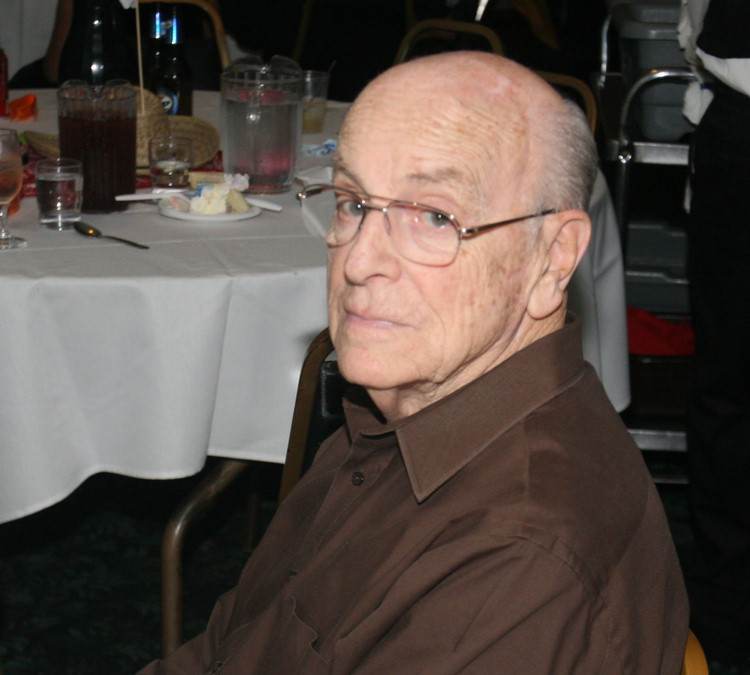
Watching who??
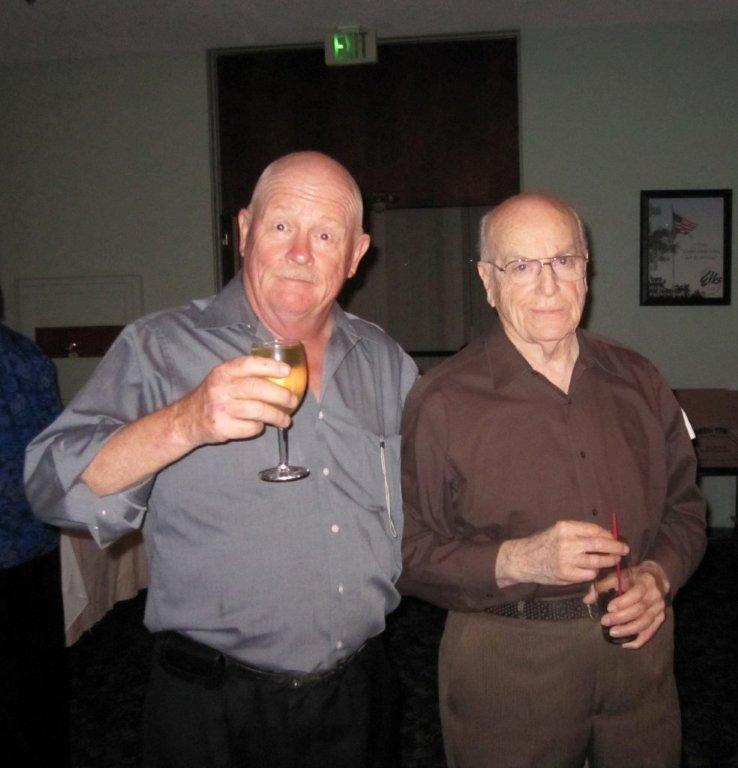
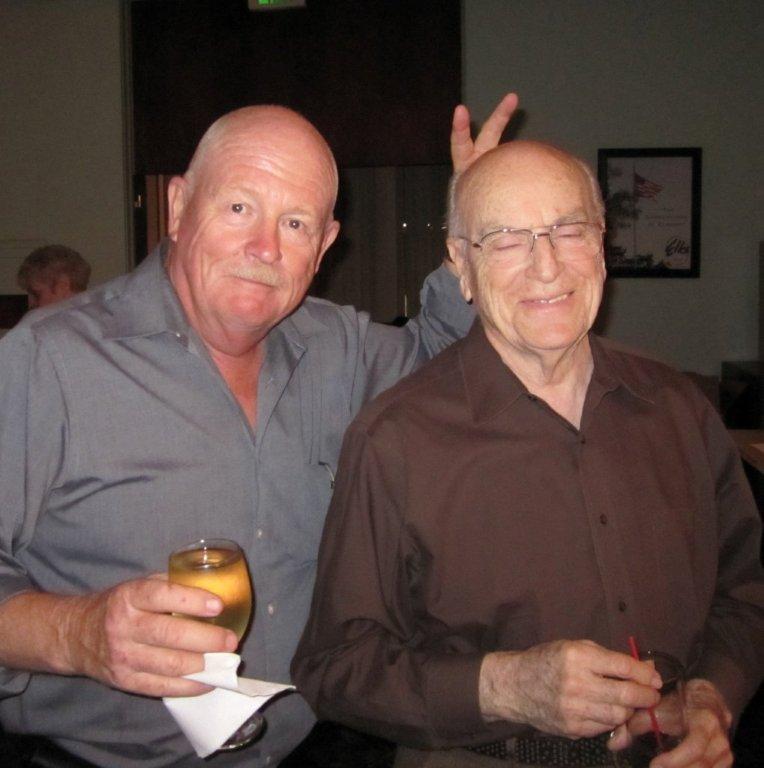
At Vicky's Table
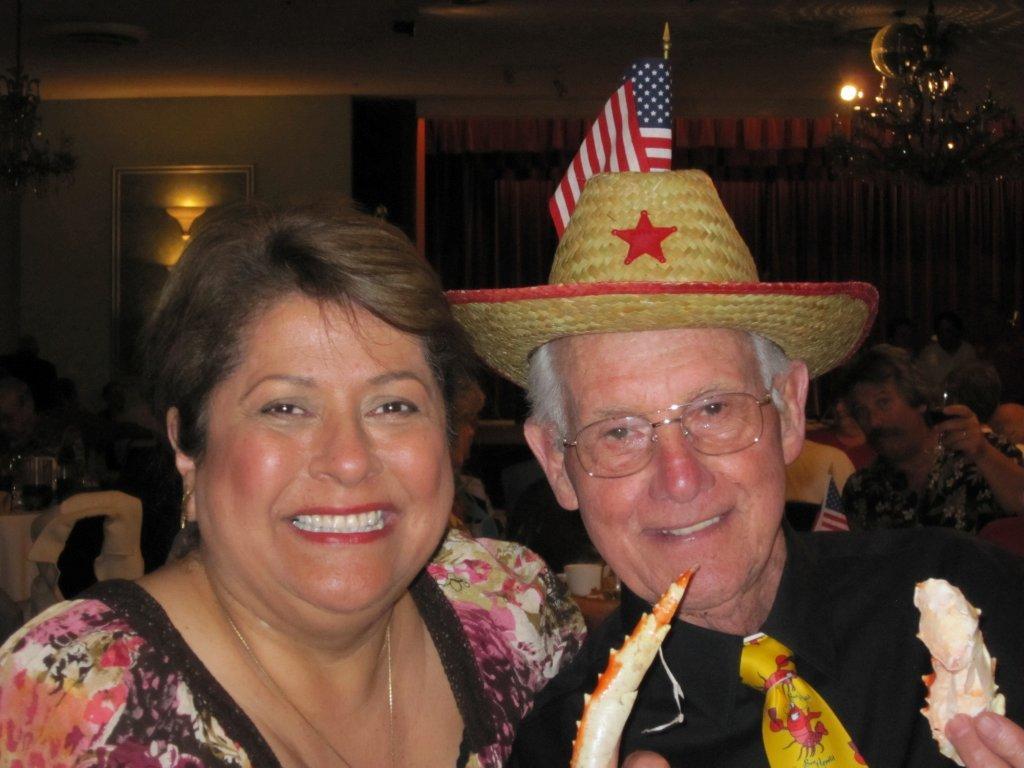
Vicky and Del Kuhn
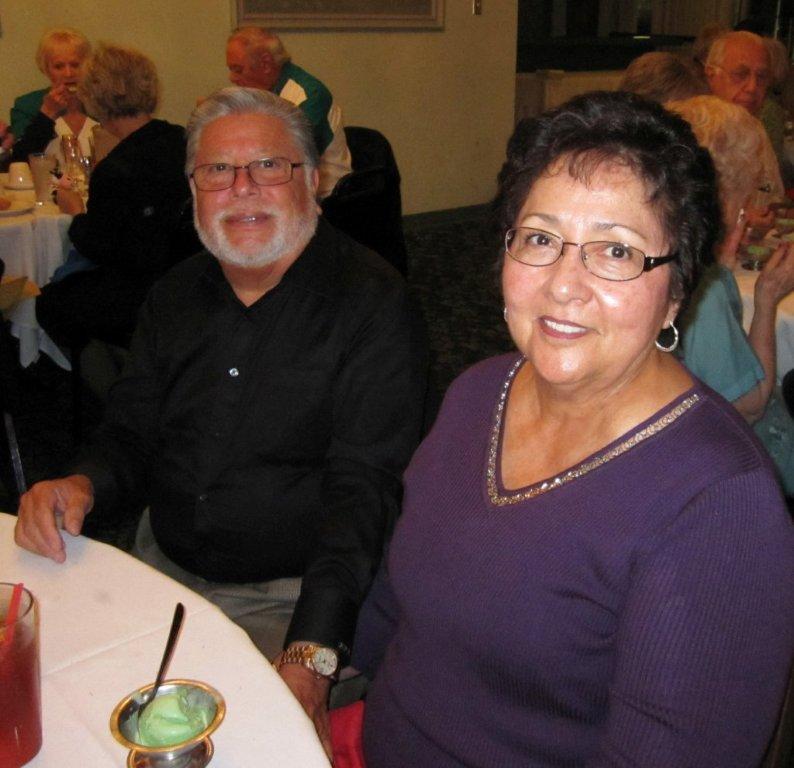
The Baca's
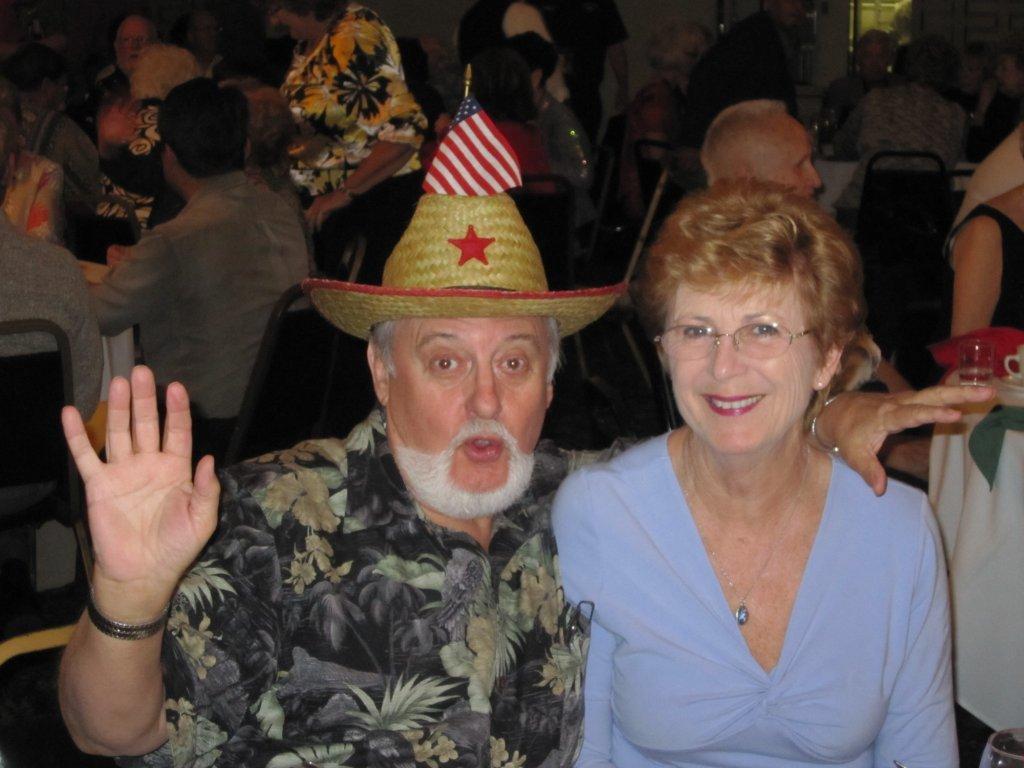
Maureen & Roger
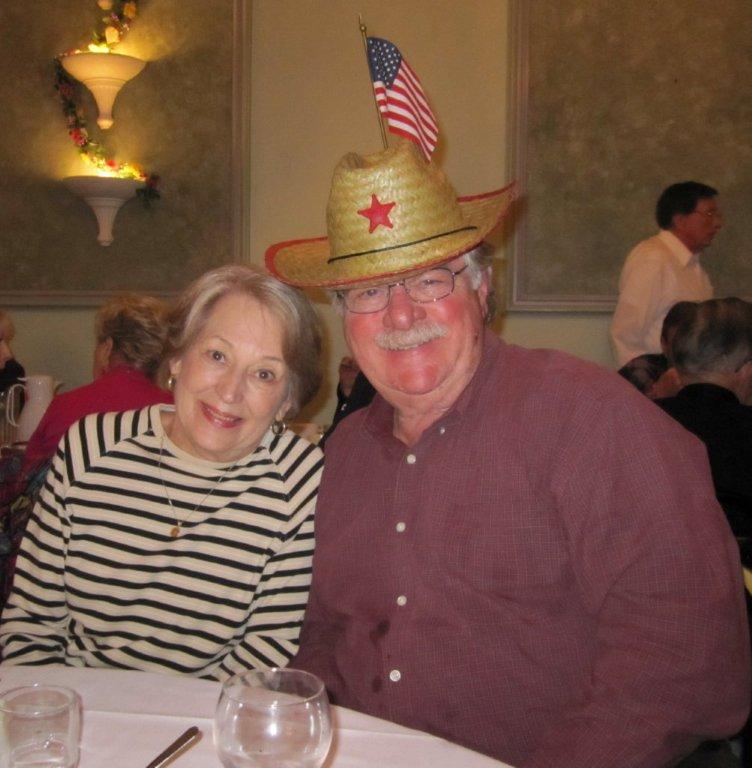

Roger And Tessie Have Many Family Members With Them This Evening

Roger is getting ready to sing!

Happy Birthday Tessie
Roger Does Elvis
Please visit Roger and Tessie's family on the next page!
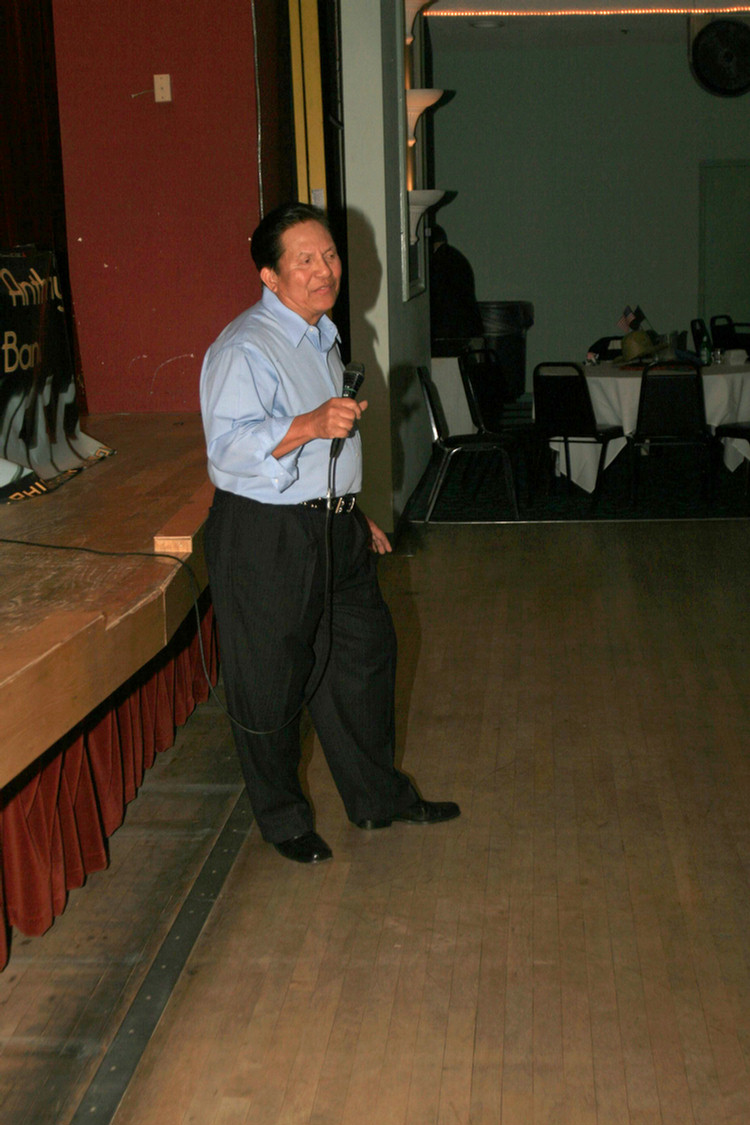
Roger does a magnificent job
Did you know? - In music, a serenade (or sometimes serenata) is, in its most general sense, a musical composition, and/or performance, in someone's honor. Serenades are typically calm, light music. In fact, the word Serenade is derived from the word sereno, which means calm.
Seems Everyone Is Celebrating Something

Popcorn Makes For a Perfect Evening

Did you know? - Popcorn or popping corn (Zea mays everta, "corn turned inside out") is a type of corn which explodes from the kernel and puffs up when heated. Corn popping was originally discovered by Native Americans, but became popular as a snack food during the United States Great Depression, especially in movie theaters.
Corn is able to pop because, unlike other grains, its kernels have a hard moisture-sealed hull and a dense starchy filling. This allows pressure to build inside the kernel until an explosive "pop" results. Some strains of corn are now cultivated specifically as popping corns.
Popcorn was first discovered thousands of years ago by the Native Americans. Some tribes believed that the popping noise was that of an angry god who escaped the kernel. The English who came to America in the 16th and 17th centuries learned about popcorn from the Native Americans.
During the Great Depression, popcorn was comparatively cheap at 5-10 cents a bag and became popular. Thus, while other businesses failed, the popcorn business thrived and became a source of income for some struggling farmers. During World War II, sugar rations diminished candy production, causing Americans to eat three times more popcorn than they had before.
At least six localities (all in the Midwestern United States) claim to be the "Popcorn Capital of the World": Valparaiso, Indiana; Van Buren, Indiana; Marion, Ohio; Ridgway, Illinois; Schaller, Iowa; and North Loup, Nebraska. According to the USDA, most of the maize used for popcorn production is specifically planted for this purpose; most is grown in Nebraska and Indiana, with increasing area in Texas.
Say Goodnight Marcia!
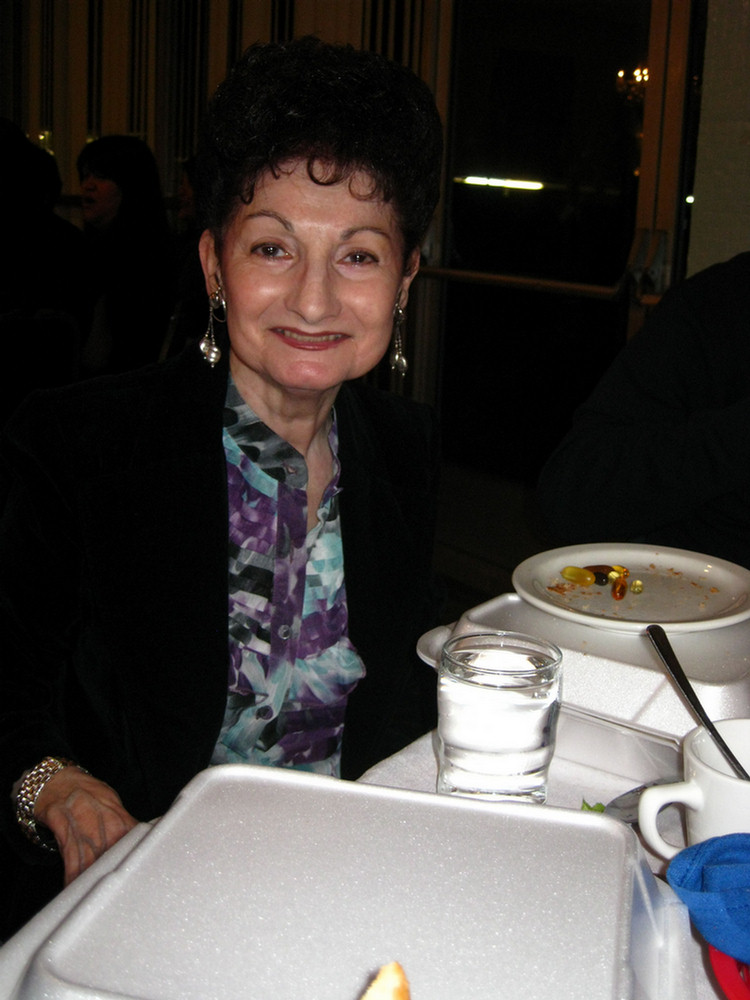
"Goodnight Marcia"
Did you know? - In later seasons, George and Gracie would often reappear after the end of the episode, eventually before a curtain decorated with the names and locations of the various theaters they headlined in their vaudeville days, performing one of their patented "double routines", often discussing one of Gracie's fictional relatives {"Death Valley Allen" the prospector; "Aunt Florence Allen" the nurse, and so on}.
Burns would always end the show with "Say goodnight, Gracie" to which Allen simply replied "Goodnight." She never said "Goodnight, Gracie," as legend has it. (This "false memory" may be caused by the Rowan & Martin's Laugh-In ending: "Say goodnight, Dick." "Goodnight, Dick!") Burns was once asked this question and said it would've been a funny line. Asked why he didn't do it, Burns replied, "Incredibly enough, no one ever thought of it."
